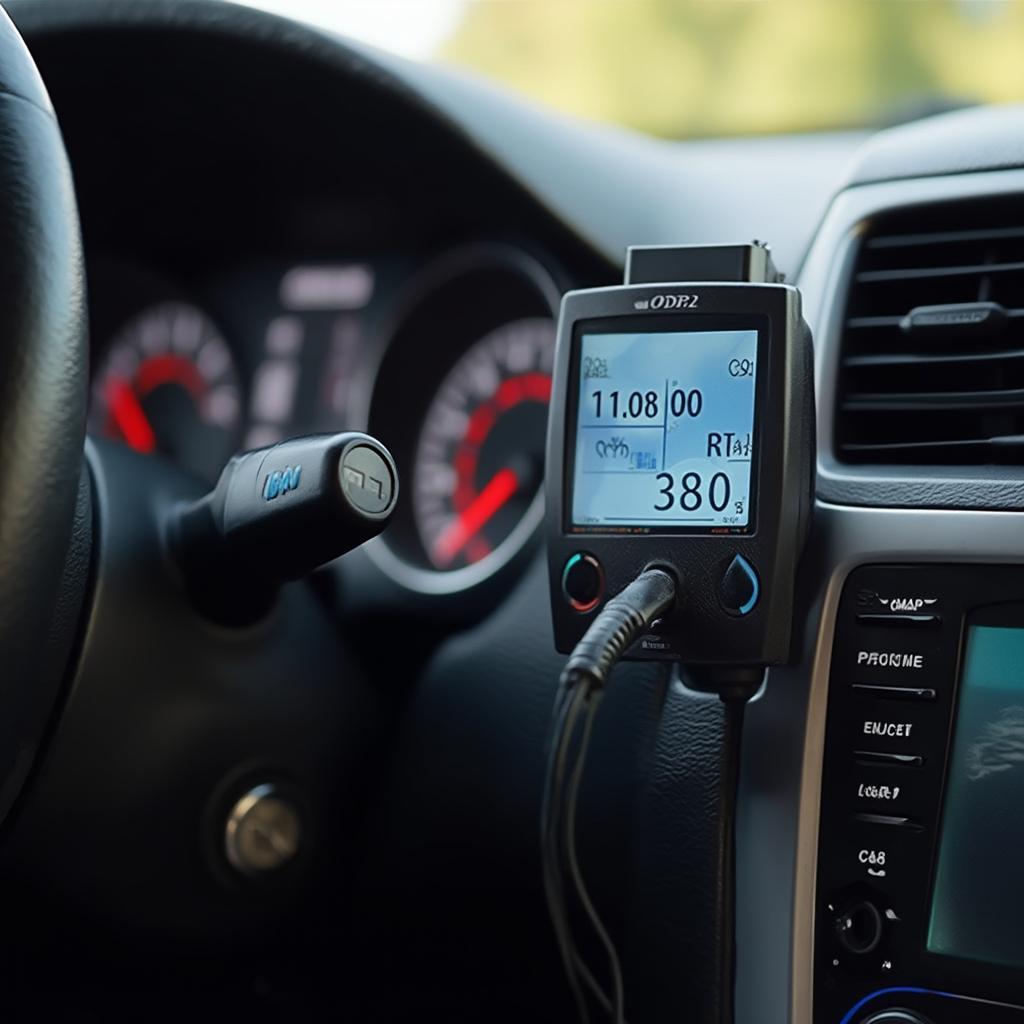An OBD2 driving recorder offers a convenient and discreet way to monitor your vehicle’s performance and driving habits. This guide explores the world of OBD2 driving recorders, helping you understand their benefits, features, and how to choose the best one for your needs. Let’s dive in and uncover the potential of this essential automotive tool. We’ll also cover some frequently asked questions and provide you with resources to make an informed decision.
Are you ready to enhance your driving experience and gain valuable insights into your vehicle’s performance? An OBD2 scanner recorder can provide the solution.
Understanding the OBD2 Driving Recorder
OBD2 driving recorders, also known as OBD2 data loggers, plug into your vehicle’s OBD2 port and record various data points. These devices are invaluable for monitoring driving behavior, diagnosing vehicle issues, and even providing evidence in the event of an accident. They can track speed, RPM, engine load, coolant temperature, and much more, offering a comprehensive overview of your vehicle’s performance.
Benefits of Using an OBD2 Driving Recorder
Using an OBD2 driving recorder offers a plethora of benefits, including improved driver safety, enhanced vehicle maintenance, and increased fuel efficiency. By monitoring driving habits, these devices can help identify areas for improvement, leading to safer driving practices. The recorded data can also be invaluable for mechanics, providing insights into potential problems and facilitating faster diagnoses. Furthermore, by tracking fuel consumption, drivers can identify fuel-wasting habits and adopt more efficient driving techniques.
 OBD2 Driving Recorder Connected to Car
OBD2 Driving Recorder Connected to Car
Choosing the Right OBD2 Driving Recorder
Selecting the right OBD2 driving recorder depends on your individual needs and budget. Consider factors like data storage capacity, GPS functionality, real-time data display, and compatibility with your vehicle. Some recorders offer advanced features like accident detection and automatic emergency calls, providing an extra layer of safety. Research different models and compare their features to find the best fit for your requirements. Check out our article on obd2 computer scanner for more insights.
Key Features to Look For
When choosing an OBD2 driving recorder, consider features like GPS tracking for location data, Wi-Fi connectivity for data transfer, and data logging capabilities. Ensure the device is compatible with your vehicle’s OBD2 system and offers a user-friendly interface. Some advanced models include features like G-sensor recording for impact detection and built-in cameras for video recording, providing a comprehensive record of your driving experience.
Installing and Using Your OBD2 Driving Recorder
Installing an OBD2 driving recorder is typically a simple plug-and-play process. Locate your vehicle’s OBD2 port, usually under the dashboard, and plug in the device. Once connected, the recorder will begin collecting data. Most devices come with software or mobile apps that allow you to view and analyze the recorded data.
Interpreting the Data
Understanding the data collected by your OBD2 driving recorder is crucial for maximizing its benefits. Learn how to interpret metrics like speed, RPM, engine load, and fuel consumption. This information can help you identify driving patterns, potential mechanical issues, and areas for improvement in fuel efficiency. You can compare information found in the obd2 key battery black box article to learn more.
Conclusion
An OBD2 driving recorder is a valuable tool for any driver looking to improve safety, monitor vehicle performance, and enhance fuel efficiency. By understanding its features and benefits, you can choose the right device to meet your needs and unlock a wealth of information about your driving and vehicle health. Investing in an OBD2 driving recorder is an investment in safety and peace of mind.
FAQ
-
What is an OBD2 driving recorder?
An OBD2 driving recorder is a device that plugs into your vehicle’s OBD2 port and records data such as speed, RPM, and engine diagnostics. -
How do I install an OBD2 driving recorder?
Installation is typically plug-and-play: locate your vehicle’s OBD2 port and insert the device. -
What data can an OBD2 driving recorder track?
These recorders can track various data points including speed, RPM, engine load, coolant temperature, and fuel consumption. -
How can I use the recorded data?
The data can be used to monitor driving habits, diagnose vehicle issues, and improve fuel efficiency. -
Are OBD2 driving recorders compatible with all vehicles?
Most modern vehicles are compatible, but it’s essential to check your vehicle’s specifications. -
How much do OBD2 driving recorders cost?
Prices vary depending on features and functionality. -
Where can I buy an OBD2 driving recorder?
They are available online and at various automotive retailers.
Common Scenarios and Questions
- Scenario: Sudden increase in fuel consumption.
- Question: Could the OBD2 driving recorder help identify the cause?
- Answer: Yes, the recorder can track fuel consumption and correlate it with other data like speed and engine load, potentially revealing the reason for increased fuel usage.
Further Exploration
- Explore our other articles on OBD2 scanners and diagnostic tools to learn more.
Need Assistance?
For any questions or support, please contact us via WhatsApp: +1(641)206-8880, or Email: [email protected]. Our customer service team is available 24/7.
